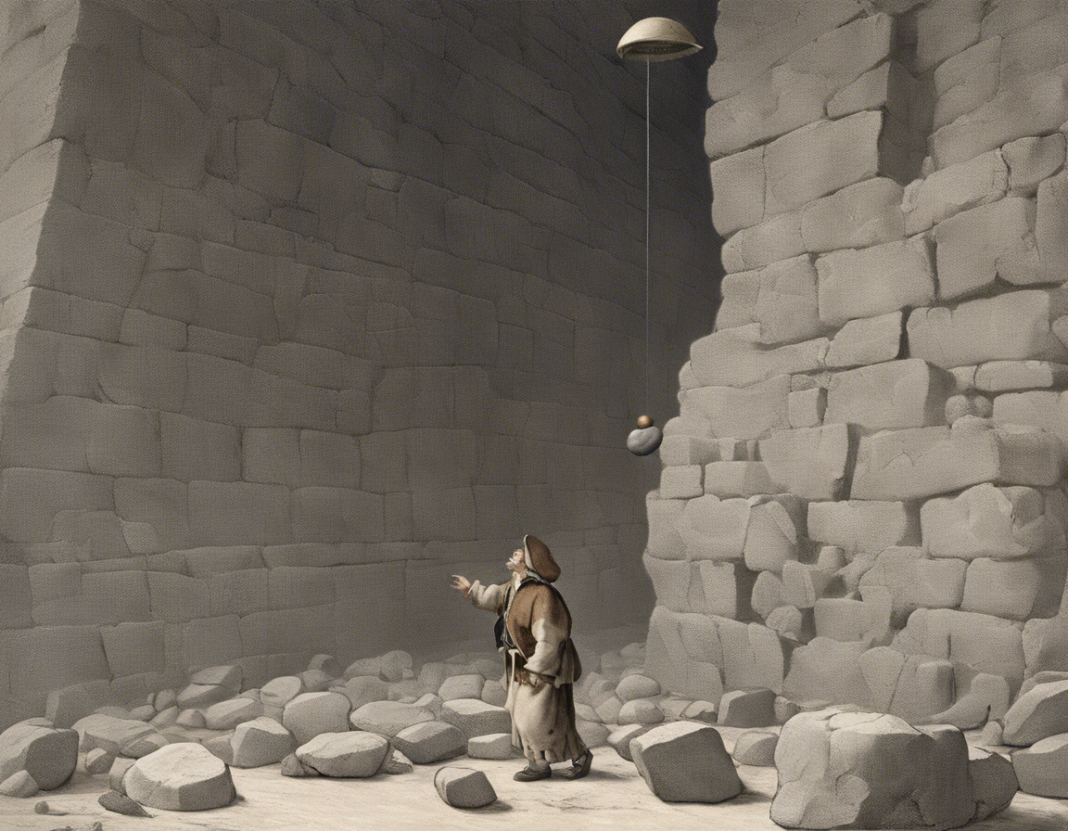Imagine standing on top of a tall building, holding a small stone in your hand. As you release your grip, the stone plummets towards the ground below. Have you ever stopped to think about the physics involved in this seemingly simple act of dropping a stone from a height?
In this article, we will explore the various physical concepts at play when a stone is dropped from a height H, including free fall, velocity, acceleration, kinetic energy, and potential energy.
Free Fall
When you release the stone from a height H, it begins to fall freely towards the Earth under the influence of gravity. In the absence of any other forces such as air resistance, the stone is said to be in free fall. The acceleration due to gravity, denoted by g, is approximately 9.81 m/s^2 near the surface of the Earth. This means that the stone’s velocity increases by 9.81 m/s every second it falls.
Velocity
As the stone falls from height H, its velocity increases due to the acceleration of gravity. The stone’s velocity can be calculated using the equation:
v = gt
where v is the final velocity, g is the acceleration due to gravity, and t is the time the stone has been falling. The velocity of the stone at any given moment can be determined by plugging in the time elapsed since the stone was dropped.
Acceleration
The stone experiences a constant acceleration of 9.81 m/s^2 in the downward direction while falling. This acceleration is a result of the gravitational force acting on the stone. The acceleration of the stone can be calculated using Newton’s second law of motion:
a = g
where a is the acceleration and g is the acceleration due to gravity.
Kinetic Energy
As the stone falls, its potential energy is converted into kinetic energy. The kinetic energy of an object is the energy it possesses due to its motion. The kinetic energy of the stone can be calculated using the equation:
KE = 0.5mv^2
where KE is the kinetic energy, m is the mass of the stone, and v is the velocity of the stone.
Potential Energy
When you were holding the stone at height H, it had potential energy due to its position above the ground. As the stone falls, this potential energy is gradually converted into kinetic energy. The potential energy of the stone at height H can be calculated using the equation:
PE = mgh
where PE is the potential energy, m is the mass of the stone, g is the acceleration due to gravity, and h is the height of the stone above the ground.
Conservation of Energy
In the absence of air resistance and other non-conservative forces, the total mechanical energy (the sum of potential and kinetic energy) of the stone remains constant throughout its fall. This is known as the conservation of energy. The initial potential energy of the stone at height H is equal to the sum of its kinetic energy and remaining potential energy at any point during its fall:
PE_initial = KE + PE
Impact at the Ground
When the stone reaches the ground, its height above the ground is 0. At this point, all of its initial potential energy has been converted into kinetic energy. The velocity of the stone just before it hits the ground can be calculated by setting its potential energy at height H equal to its kinetic energy just before impact.
Now that we have explored the physics of a stone dropped from height H, let’s address some common questions related to this topic.
Frequently Asked Questions (FAQs)
Q1: Does air resistance affect the motion of a stone dropped from height H?
A1: In our discussion, we have assumed the absence of air resistance. In reality, air resistance can slow down the motion of the stone, affecting its velocity and acceleration.
Q2: How does the mass of the stone impact its motion when dropped from height H?
A2: The mass of the stone does not affect its acceleration due to gravity. However, a heavier stone will have more inertia and resistance to changes in its motion.
Q3: What happens if the stone is thrown downwards instead of being dropped from height H?
A3: If the stone is thrown downwards, it will have an initial velocity in addition to the acceleration due to gravity. This initial velocity will impact its motion and final velocity upon impact.
Q4: How does the height from which the stone is dropped affect its final velocity?
A4: The higher the height from which the stone is dropped, the greater the final velocity it will achieve upon reaching the ground, due to the conversion of potential energy into kinetic energy.
Q5: What happens to the kinetic energy of the stone at the instant it hits the ground from height H?
A5: At the instant the stone hits the ground, all of its potential energy has been converted into kinetic energy. This kinetic energy is at its maximum, corresponding to the stone’s maximum velocity at impact.
In conclusion, the act of dropping a stone from a height H involves a complex interplay of physical principles such as free fall, velocity, acceleration, kinetic energy, potential energy, and the conservation of energy. By understanding these concepts, we can appreciate the physics behind even the simplest of actions in our everyday lives.






